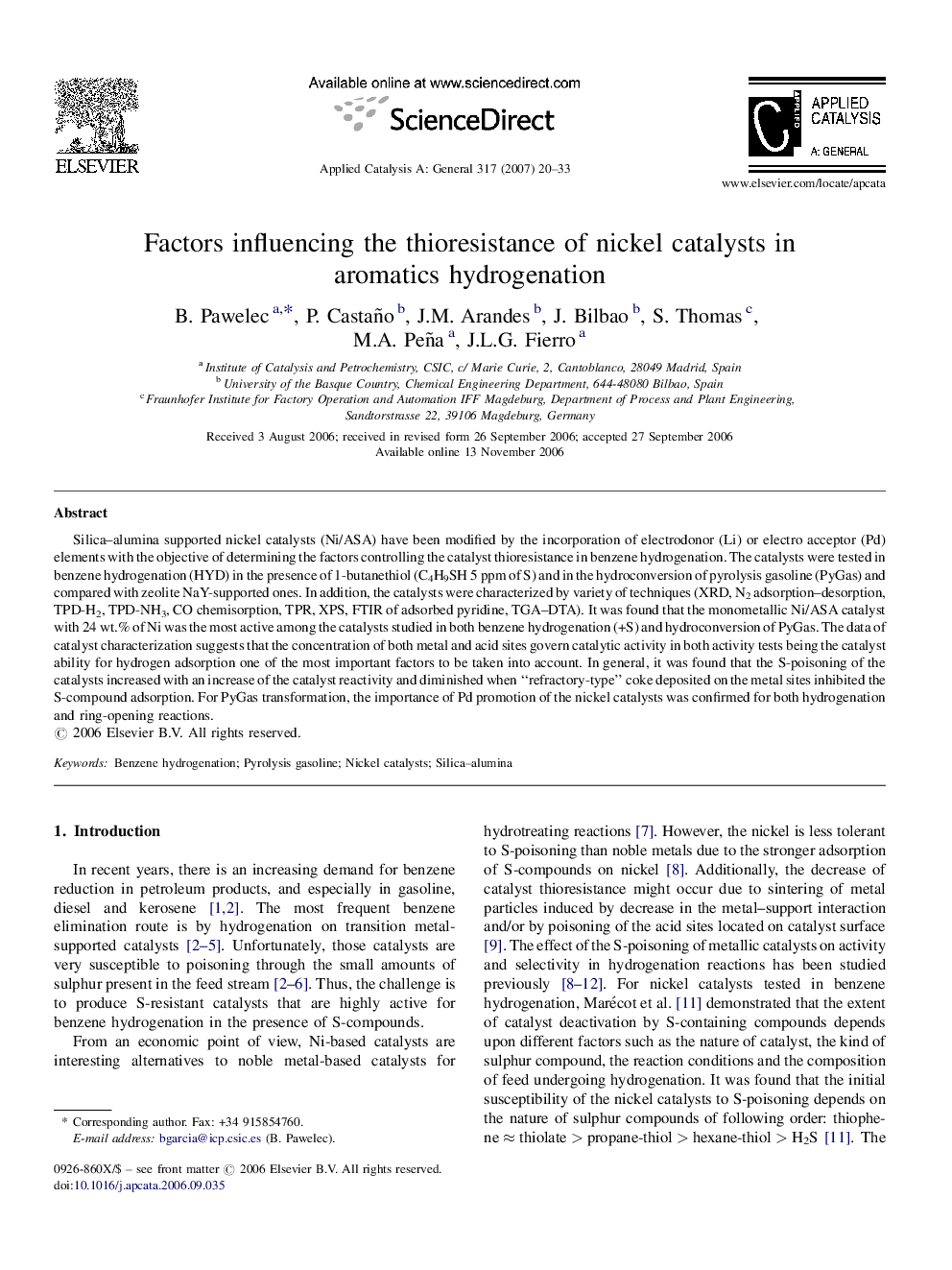| Article ID | Journal | Published Year | Pages | File Type |
|---|---|---|---|---|
| 44451 | Applied Catalysis A: General | 2007 | 14 Pages |
Silica–alumina supported nickel catalysts (Ni/ASA) have been modified by the incorporation of electrodonor (Li) or electro acceptor (Pd) elements with the objective of determining the factors controlling the catalyst thioresistance in benzene hydrogenation. The catalysts were tested in benzene hydrogenation (HYD) in the presence of 1-butanethiol (C4H9SH 5 ppm of S) and in the hydroconversion of pyrolysis gasoline (PyGas) and compared with zeolite NaY-supported ones. In addition, the catalysts were characterized by variety of techniques (XRD, N2 adsorption–desorption, TPD-H2, TPD-NH3, CO chemisorption, TPR, XPS, FTIR of adsorbed pyridine, TGA–DTA). It was found that the monometallic Ni/ASA catalyst with 24 wt.% of Ni was the most active among the catalysts studied in both benzene hydrogenation (+S) and hydroconversion of PyGas. The data of catalyst characterization suggests that the concentration of both metal and acid sites govern catalytic activity in both activity tests being the catalyst ability for hydrogen adsorption one of the most important factors to be taken into account. In general, it was found that the S-poisoning of the catalysts increased with an increase of the catalyst reactivity and diminished when “refractory-type” coke deposited on the metal sites inhibited the S-compound adsorption. For PyGas transformation, the importance of Pd promotion of the nickel catalysts was confirmed for both hydrogenation and ring-opening reactions.
Graphical abstractNi/silica–alumina catalysts modified by Li or Pd were tested in benzene hydrogenation in the presence of 1-butanethiol (5 ppm of S) and in the hydroconversion of pyrolysis gasoline (PyGas). For PyGas transformation, the importance of Pd promotion of the nickel catalysts was confirmed for both hydrogenation and ring-opening reactions. Figure optionsDownload full-size imageDownload as PowerPoint slide
